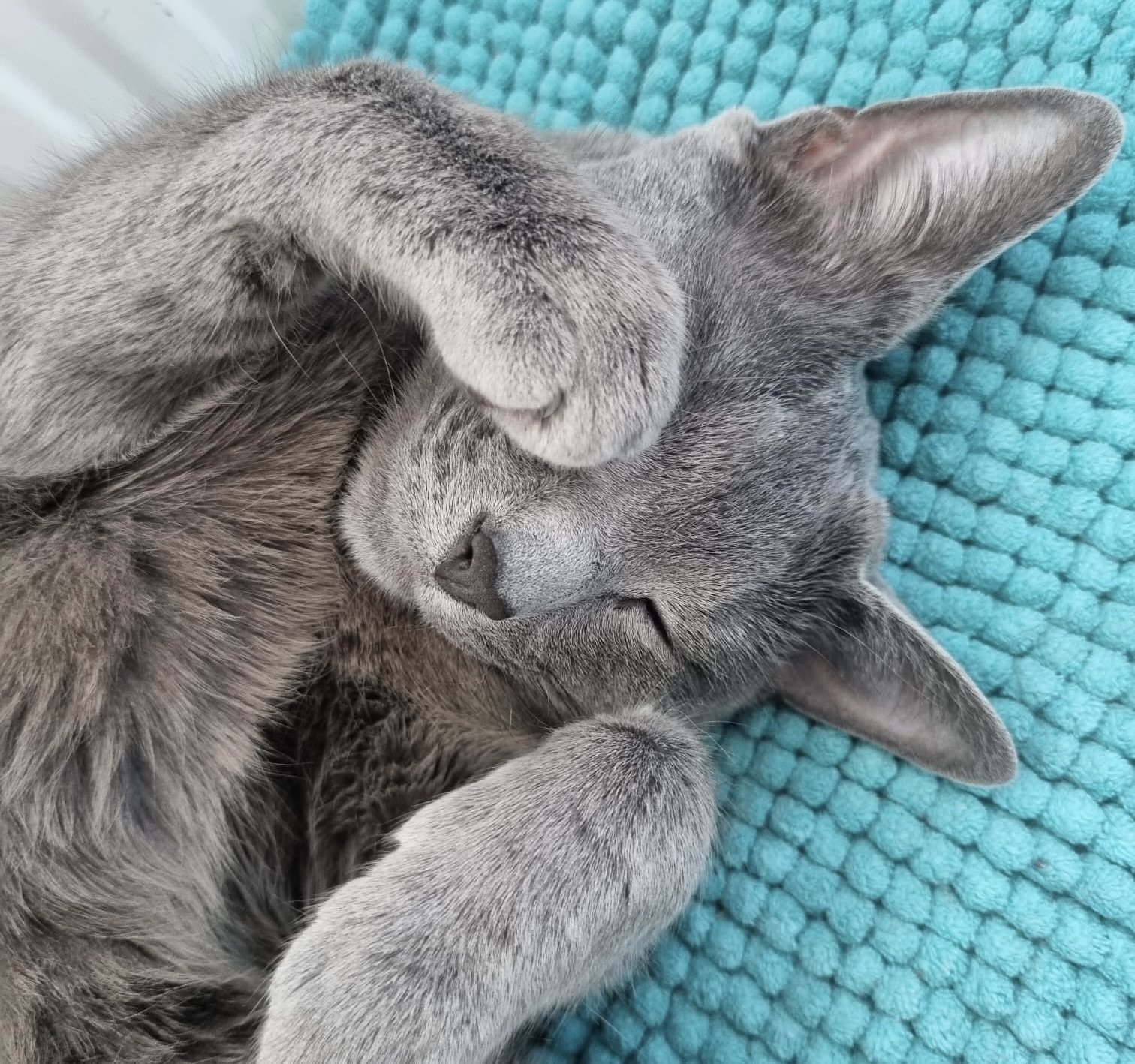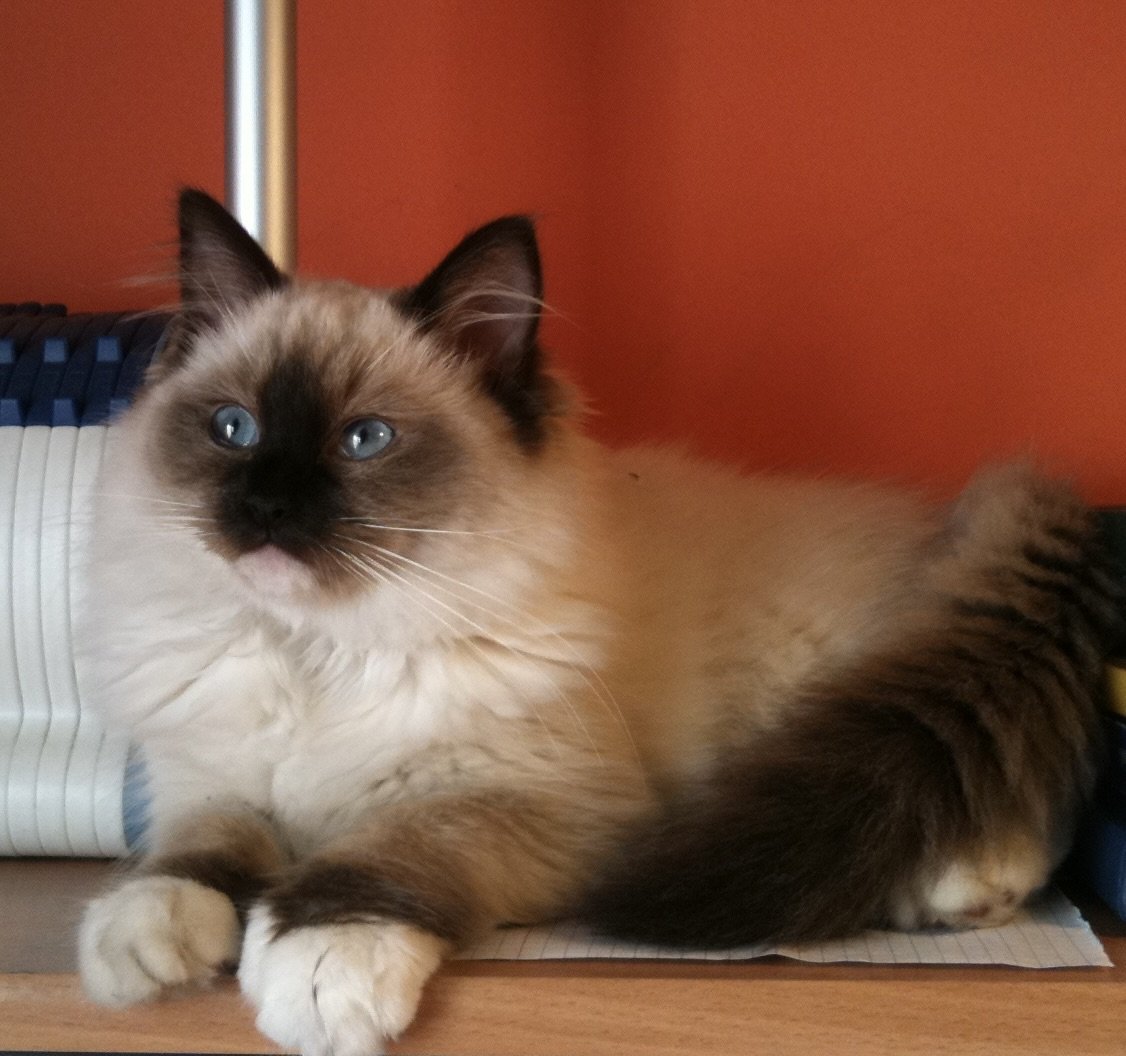
Filters
CLEAR ALLManx cats are known to be an ancient breed with roots from the Isle of Man in the Irish Sea. Known as the working cat on the Isle of Man, they have great intelligence, strong composition and an active personality. Their lack of tail is produced by a mutation that possibly originated among the island’s native shorthair cat population. Because this is a dominant gene, it spread to other cats on the island.
Manx cats are medium-sized round, hefty cats mirroring a bowling ball. Most are recognized for their lack of a tail; however, not all kittens are born tailless. They get along great with children and other family pets.
The approachable, affectionate Manx cat can carry on a chat in a sweet, thrilling voice. They generally will bond most deeply with the person who feeds them. But all in all, they are great family cats. They can entertain themselves and can be left alone for work hours. However, as they have a lot of love to give, they prefer not to be left alone for long periods of time and are always pleased when their family returns.
Manx cats tend to accelerate throughout the house, doing quick stops and sharp turns. That’s why they are frequently compared to a mini race car driver. Both playful and gentle, these active cats are excellent leapers and skilled to be in the highest corner of the house to survey the thing that captured their interest.
Because of their intelligence, Manx cats need to be mentallt stimulated by teaching them tricks and giving them interactive and puzzle toys to play with. They can play a game of fetch and can be seen carrying toys around using their mouth. They are also known to soak their toys in their water dish.
This cat breed was one of the original show cats exhibited in Great Britain. When the Cat Fancy Association was founded in 1906, Manx cats were one of the founding cat breeds.
Manx cats are known to be an ancient breed with roots from the Isle of Man in the Irish Sea. Known as the working cat on the Isle of Man, they have great intelligence, strong composition and an active personality. Their lack of tail is produced by a mutation that possibly originated among the island’s native shorthair cat population. Because this is a dominant gene, it spread to other cats on the island.
Manx cats are medium-sized round, hefty cats mirroring a bowling ball. Most are recognized for their lack of a tail; however, not all kittens are born tailless. They get along great with children and other family pets.
The approachable, affectionate Manx cat can carry on a chat in a sweet, thrilling voice. They generally will bond most deeply with the person who feeds them. But all in all, they are great family cats. They can entertain themselves and can be left alone for work hours. However, as they have a lot of love to give, they prefer not to be left alone for long periods of time and are always pleased when their family returns.
Manx cats tend to accelerate throughout the house, doing quick stops and sharp turns. That’s why they are frequently compared to a mini race car driver. Both playful and gentle, these active cats are excellent leapers and skilled to be in the highest corner of the house to survey the thing that captured their interest.
Because of their intelligence, Manx cats need to be mentallt stimulated by teaching them tricks and giving them interactive and puzzle toys to play with. They can play a game of fetch and can be seen carrying toys around using their mouth. They are also known to soak their toys in their water dish.
This cat breed was one of the original show cats exhibited in Great Britain. When the Cat Fancy Association was founded in 1906, Manx cats were one of the founding cat breeds.



The Manx is a medium-sized cat with a distinct round, stocky body. Females typically weigh 8 to 10 pounds, and males can weigh up to 13 pounds. They have broad chests, sloping shoulders, and their front legs are noticeably shorter than their hind legs.
Their heads are also round, which sits atop a long neck. They have large eyes, rounded ears and a slightly small nose. Gold is the most common eye colour, but shades vary, and copper and green hues are typical.
Interestingly, not all Manx are tailless, and some have normal-length tails. These Manx are known as ‘longies,’ while tailless Manx are known as ‘Rumpies.’ Additionally, some may have a stump (stumpies) or a half-length tail (stubbies).
The typical Manx will be short-haired, although long-haired Manx are possible too. Their coats are thick and double-layered regardless of the length, making them well suited to cold British weather. However, both short and long-haired Manx shed a fair amount, especially in spring and autumn. Therefore, brushing them at least twice a week is recommended.
Because Manx cats have been extensively cross-bred, they can come in all colours and patterns. Tabby and tortoiseshell remain the most common, but you can easily find Manx cats with white, black, cream, silver, and brown fur, either solid or mixed. Other colours are possible, too, although less common.
Manx cats have an ideal balance between being loyal and independent, making them easy-going felines to have in the home. They love receiving attention, and some may follow their owners around, staying close to their humans at all times.
The Manx is an extremely intelligent breed, and many of them can learn to play fetch and perform tricks. They are playful and interactive and love nothing more than play sessions with their favourite humans. They can also be pretty vocal, but they speak with a quiet trill rather than a whining meow.
While they are friendly with their owners, they can act a little shy towards strangers. Therefore, early socialization is vital with this breed. The more people and animals they meet as a kitten, the more adaptable they will be as an adult.
As prized hunters, domestic Manx cats still display impressive hunting skills. Even as kittens, they can take down prey that is almost the same size as them! They sprint at lightning speed but possess more of a bunny-like hopping motion rather than a traditional stride. So naturally, they love to hunt prey and explore outside. However, if you decide to keep your Manx as an indoor cat, ensure they have plenty of toy mice to chase instead.
A Manx will thrive in any home where they receive plenty of love and attention. They do need an owner who is home regularly, though. So if you work full-time and there is no one else around, they may not be the best breed. Their well-being can suffer if they don’t get sufficient quality time together due to their strong owner attachment.
Manx cats do well with children and other animals, especially when introduced from a young age. In fact, because of their high social needs, we recommend getting a pair of Manx kittens or another feline companion for your baby Manx. Like many breeds, Manx kittens thrive when they grow up with a buddy.



Their stories
We love happy endings. Discover stories of pets who found their beloved family with the help of The Pedigree Paws <3.

Neo
Russian Blue
We had some concerns purchasing a kitten online but our experience with The Pedigree Paws was great. They connected us with Caroline, the Russian Blue breeder and we had many conversations and received multiple pictures and videos. She answered to all our questions.
The Pedigree Paws verified for us all the vaccinations and health checks to make sure our new kitten was 100% healthy.
Thank you for all your help The Pedigree Paws! Highly recommended!

Jack
Miniature Dachshund
One of the reasons I was hesitant to order a puppy from The Pedigree Paws is because I live in Spain. However they connected me with a very good FCI breeder in Barcelona.
He showed me all the health documents of both parents, their pedigree and answer to all my questions. I am so happy they helped me to find a healthy puppy as finding one by myself was very overwhelming. Contacting The Pedigree Paws was the best decision and I highly recommend them to everybody!

Stitch
Chartreux
From the kittens's selection to the arrival of our Chartreux kitten, The Pedigree Paws was there to assist us. We had great experience with them, and they breeder Alexandra from France with whom they connected us and from whom we got our kitten from. They are very prompt in answering our initial and follow-up questions while our kitten was in transit. Very reliable and trustworthy!
Thank you so much for all your help. We are very happy with our new family member. We will definitely recommend it to all our friends.
Athena
Chihuahua
It's been a few months since we decided to find a Chihuahua puppy to join our family, however we had issues finding a good breeder.
We contacted The Pedigree Paws and they connected us with a very unique breeder in Greece. Many videos and pictures were shown, the breeder shared with us the proof of vaccinations, deworming and her 5 generation pedigree. We were fortunate as George, the breeder was able to deliver the puppy to us personally. We are very pleased with our beautiful Athena. Thank you, The Pedigree Paws, for being truthful and transparent.
Thor
Abyssinian
I feel wonderful having help from The Pedigree Paws finding the dream Abyssinian kitten I was looking for. Thor is the absolute dream! The Pedigree Paws team was really patient and responsible in everything. Lovely experience! They replied to every questions, requirements, and information I ask about the kitten.
Fin
Chihuahua
Thank you for finding for me such a beautiful Chihuahua puppy! I love him so much from the minute I saw him. He changed my world.
Kate, from The Pedigree Paws assisted me through the whole process informing me about everything from health checks to arranging a Pet Nanny to transport Fin directly to my door. So thankful that the experience went so well! I love my Fin.

Emi
Ragdoll
I have always wanted a Ragdoll kitten as it was my dream cat breed, but didnt know how to find one as heard a lot about kitten farms and bad breeders. I reached out to The Pedigree Paws and they were very accommodating and transparent from the start. They offered me few kittens from their list of breeders and when I saw Emi I knew she was the one! We went through the kitten's parents DNA testing as for me that was a priority to have a kitten free from genetic disorders. We sealed the deal and now I have the best kitten I could dream of! Thank you very much for all your help
Shima
Russian Blue
I really wanted a Russian Blue kitten, but was very nervous getting one after reading horror stories about scammers on the Internet. I had my first call with Natalia, from The Pedigree Paws and with her help I was able to connect with the breeder, that I knew I could trust. I am very lucky to have now Shima, she is an absolute joy to live with.
Need some help?
Contact us to speak to our friendly advisor, who will gladly help you find your dream pet!



We are registered in England and Wales under registration number 12568840,
and our registered office is at 58-60 Kensington Church Street, W8 4DB London, England.
© 2023 The Pedigree Paws